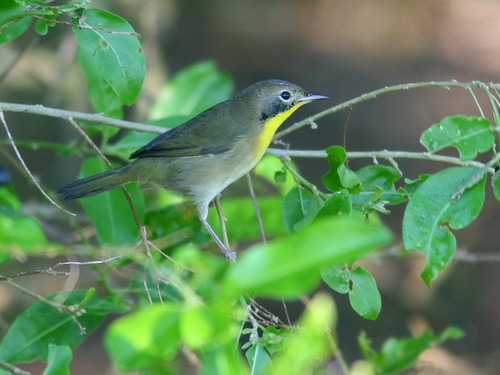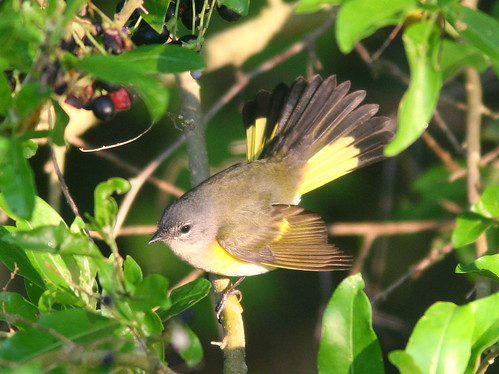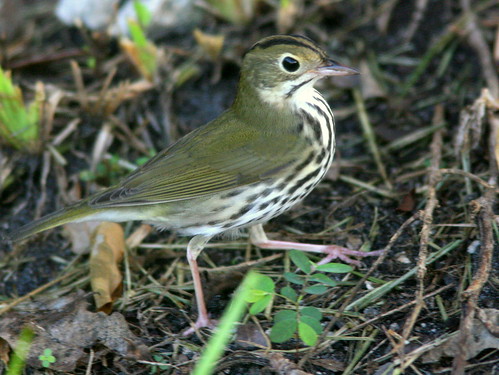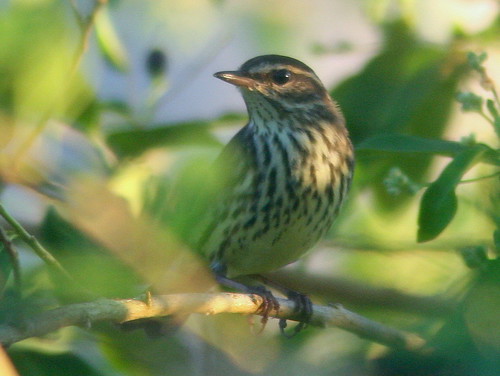Posted by: Ken @ 8:01 pm
As a kid, I remember summer days that seemed endlessly full of discovery. School interfered with enjoyment of both spring and fall migration, but the woods and the warblers were were close by and accessible on weekends. Now the days and weeks and years just fly by. Job lamented (7:6) that his days passed by “swifter than a weaver’s shuttle,” Happily, we learn in the last chapter (42:12) that “the Lord blessed the latter end of Job more than his beginning.” I too, feel blessed.
During migration, I hate to miss even a day of birding. This morning I walked out to our local “patch” just as the sun was coming up. Mary Lou couldn’t make it, but was happy now that she has had good looks at her Ovenbird. My objective was to get photos of one of the male American Redstarts that have been eluding me all week. They scoot so fast that it has been impossible for me to focus on one, as they move along horizontal branches, changing direction and then suddenly deciding that another tree is better than this one.
Walking in, along the unpaved road, I watched the sunlight creep down from the tops of the tallest palms. This kind of light poses photographic challenges for me. There is harsh glare, and images turn out too “warm,” on the orange/red side of the spectrum. My first subject posed such a problem. When I got home I had to process the photos to shift the color more to the “cool” blue side.
On the top of a Royal Palm that had lost its crown and died, a male Northern Flicker probed for a meal :
Although it is possible to set out to see certain “target birds,” my experience has been that most of my best sightings have been unexpected. Sure enough, I saw three male redstarts and my only shot showed just tail feathers, certainly not a “keeper.” However, there were several females, or rather similar immature males, that were more cooperative.
This female American Redstart characteristically fanned its wings and tail. I’m not sure whether the survival value of this trait has been clearly established. I assume the birds show their colored patches to startle insect prey into moving, but this habit may also serve in species recognition and courtship:
An immature male Common Yellowthroat proved to be another difficult subject, and only one of my dozen or so images of it produced an unobstructed side view:
Delightfully, a pair of Black-throated Blue Warblers payed me little heed as they gleaned insects from a small tree. The male was conspicuously marked:

The female, also sporting the trademark white wing patch, is also beautiful in her own way:
While I was trying to track down another redstart, I perceived movement down on the ground to my right, and was surprised to see an Ovenbird staring at me. It stayed in place while I shifted position to take its picture:

It was ironic how we had searched unsuccessfully for Ovenbirds only last week, and now they seemed to have grown accustomed to human presence. This one high-stepped on pink legs:
Another bird, that I first thought was a second Ovenbird, appeared on a low perch. It was a Northern Waterthrush:
Mary Lou was sure that she had seen a waterthrush here only a couple of days ago, but I could not re-locate it. This bird actually joined the Ovenbird on the ground momentarily, but then flew back to peer out at me from behind the leaves:
















